Photo

Today In History
Leontyne Price, world-renowned opera singer, and the first African American singer to achieve an international reputation in opera—made her formal debut at the Metropolitan Opera House on this date January 27, 1961.
Both of Price’s grandfathers had been Methodist ministers in Black churches in Mississippi, and she sang in her church choir as a girl. Only when she graduated from the College of Education and Industrial Arts (now Central State College) in Wilberforce, Ohio, in 1948 did she decide to seek a career as a singer.
She studied for four years at the Juilliard School of Music in New York City, where she worked under the former concert singer Florence Page Kimball, who remained her coach in later years. Her debut took place in April 1952 in a Broadway revival of Four Saints in Three Acts by Virgil Thomson and Gertrude Stein.
Leontyne Price performance in that production, which subsequently traveled to Paris, prompted Ira Gershwin to choose her to sing the role of Bess in his revival of Porgy and Bess, which played in New York City from 1952 to 1954 and then toured the United States and Europe. The year 1955 saw her triumphant performance of the title role in the National Broadcasting Company’s television production of Tosca, and she sang leading roles in other operas on television in the next few years.
CARTER™️ Magazine carter-mag.com #wherehistoryandhiphopmeet #cartermagazine #historyandhiphop365 #carter
#leontyneprice #blackhistorymonth #blackhistory #history #staywoke
https://www.instagram.com/p/Cn6lbq8ue2W/?igshid=NGJjMDIxMWI=
70 notes
·
View notes
Photo
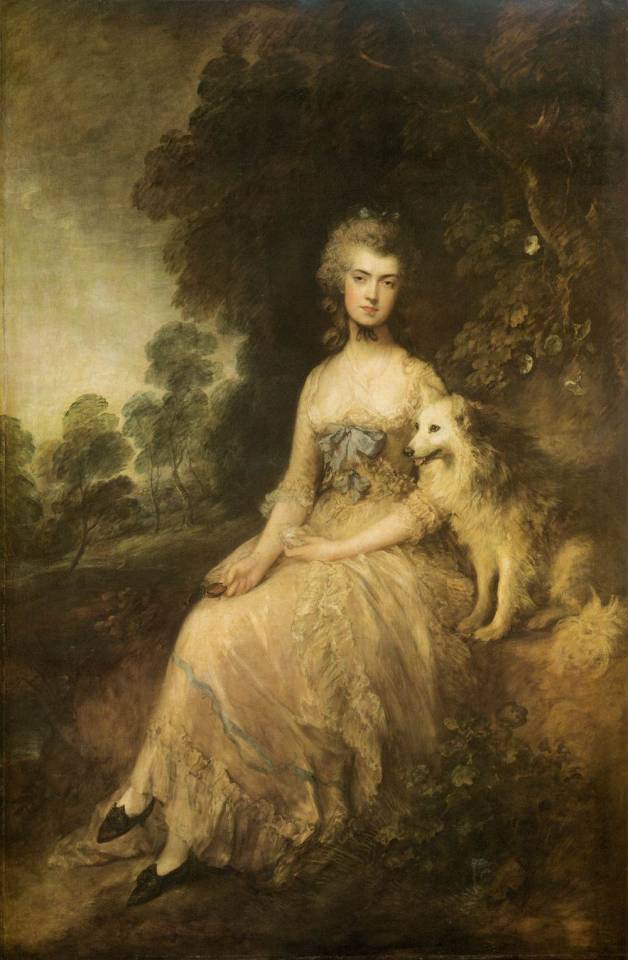
Mrs. Mary Robinson (“Perdita”) (1781). Thomas Gainsborough (English, 1727-1788). Oil on canvas. Wallace Collection, London.
Mary Robinson, née Darby, was an English poet and novelist. She was also known for her role as Perdita (heroine of Shakespeare’s The Winter’s Tale) in 1779. It was during this performance that she attracted the notice of the young Prince of Wales, later King George IV of Great Britain and Ireland. Her affair with him ended in 1781, and “Perdita” Robinson was left to support herself through an annuity granted by the Crown (in return for some letters written by the Prince) in 1783 and through her writings. Today, she is remembered both as the first public mistress of George IV, and as a woman writer of the late 18th century.
72 notes
·
View notes
Text
“I don’t want youthful marriages. They must go to school … no child should be found loitering at home or doing household chores during school time," Chief Theresa Kachindamoto said.
Previously in Malawi, only 45% of girls stay in school past the 8th grade—half marry before turning 18. Chief Kachindamoto contributed to the February 2017 adoption of a constitutional amendment raising the minimum age of marriage from 15 to 18 years.
Since becoming Chief, Chief Kachindamoto has annulled 3,500 child marriages in the central region of Malawi and has helped girls complete their education, often by subsidizing their schooling.

107 notes
·
View notes
Text

Marion Stokes, a Philadelphia woman who began taping whatever was on television in 1979 and didn't stop until her death in 2012.. The 71,000 VHS and Betamax tapes she made are the most complete collection preserving this era of TV. They are being digitized by the Internet Archive.

344 notes
·
View notes
Photo

Camille Rosalie Claudel (8 December 1864 – 19 October 1943) was a French sculptor known for her figurative works in bronze and marble. She died in relative obscurity, but later gained recognition for the originality and quality of her work. The subject of several biographies and films, Claudel is well known for her sculptures including The Waltz and The Mature Age.
The national Camille Claudel Museum in Nogent-sur-Seine opened in 2017. Claudel was a longtime associate of sculptor Auguste Rodin, and the Musée Rodin in Paris has a room dedicated to her works.
Sculptures created by Claudel are also held in the collections of several major museums including the Musée d'Orsay in Paris, the Courtauld Institute of Art in London, the National Museum of Women in the Arts in Washington, D.C., the Philadelphia Museum of Art, and the J. Paul Getty Museum in Los Angeles.
108 notes
·
View notes
Photo
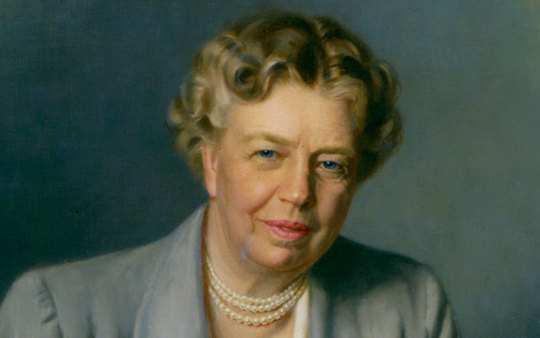

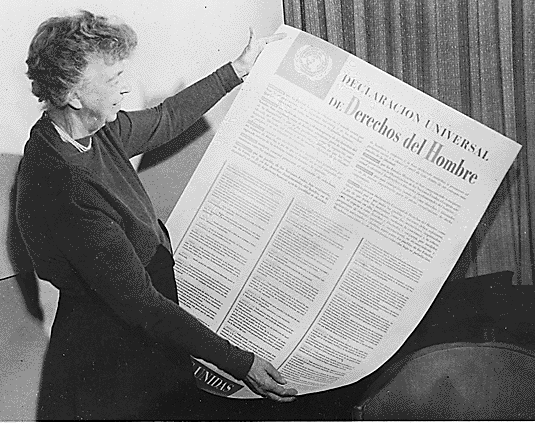
October 11th 1884: Eleanor Roosevelt born
On this day in 1884 Eleanor Roosevelt was born in New York City. She married her cousin Franklin D. Roosevelt, the future President, in 1905. Eleanor was actively involved in her husband’s political career, and encouraged him to continue in politics after his partial paralysis from polio in 1921. Franklin was elected President of the United States in 1932 and served as President from 1933 until his death in 1945. Eleanor was a very active First Lady, openly campaigning for greater rights for women and African Americans. After FDR’s death, Eleanor was a US delegate to the United Nations, and chaired the UN Commission on Human Rights. In this capacity she oversaw the creation of the Universal Declaration of Human Rights. Eleanor Roosevelt died in 1962 aged 78.
315 notes
·
View notes
Link
“The Sumerian King List is unsurprisingly filled with the names of men: Alulim, Hadanish and Zizi. But alongside its male monarchs, the world’s first known civilization also produced the first known female ruler: Kubaba (also Kug-Bau or Ku-Baba) who brewed and sold beer in the ancient city of Kish in Mesopotamia.
The story of powerful ancient women often centers on Egypt, where Sobekneferu, Hatshepsut and Cleopatra reigned as pharaohs. But Kubaba ascended to the throne of Sumer long before them all, likely around 2400 B.C. To be clear, she was a true monarch — a queen regnant who ruled in her own right, rather than a queen consort, who is simply the wife of the monarch. The King List refers to her as lugal (king), not as eresh (queen consort). She is the only woman to bear this title.”
42 notes
·
View notes
Text
Chien-Shiung Wu

Most famous for the Wu experiment, Chien-Shiung Wu (1912-1997) was a Chinese-American physicist. Sometimes called the First Lady of Physics, her exclusion from the 1957 Nobel Prize in Physics remains one of the most controversial decisions, along with the exclusion of Rosalind Franklin.
Wu was born in Jiangsu, China to an engineer and a teacher who encourager her education and interests from a young age. She attended the National Central University in Nanjing, where she met philosopher Hu Shih, who would be a great influence in her life. She taught herself algebra, geometry, and trigonometry to be able to major in physics, where she excelled. After her graduation, she worked as an assistant, before her supervisor, a woman who had earned her Ph.D. abroad at the University of Michigan, encouraged Wu to do the same.
Upon arrival, however, she switched to the University of California, Berkeley, where she was outstandingly bright. Her research focused on beta decay, electromagnetic radiation, and nuclear fission.
This impressed J. Robert Oppenheimer, (whom Wu apparently affectionately referred to as 'Oppie'), that he offered Wu a place with the Manhattan Project. Her work on uranium enrichment was essential for the creation of the atomic bombs, though afterward she distanced herself from the project.
It was after the war that Wu performed the Wu experiment, for which her colleagues Tsung-Dao Lee and Chen-Ning Yang won the Nobel Prize. She did, however, win the UNESCO Woman of the Year award (1981) and was the first person to receive the Wolf Prize in Physics (1978). She was the first woman to receive the National Medal of Science in Physics, along with many other honors.
117 notes
·
View notes
Text
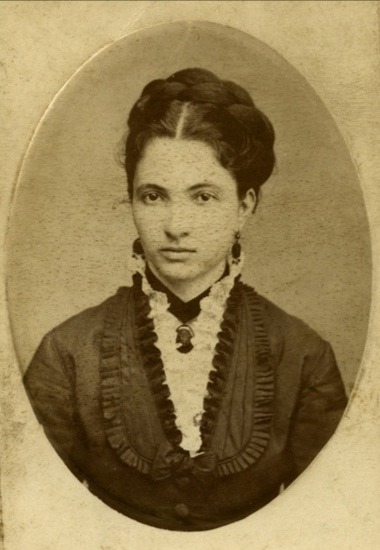
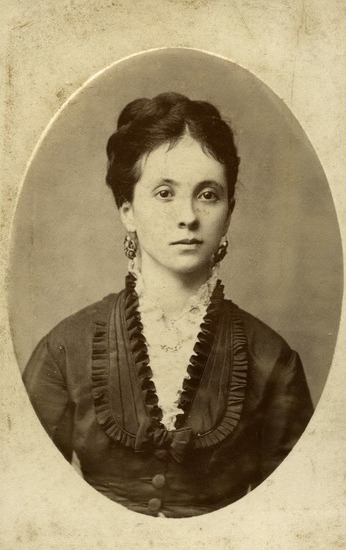
Sisters Kina Kuncheva - Kesyakova and Ivanka Kuncheva - Gorova, born in 1854 and 1856, respectfully, in Tryavna, Ottoman empire, now Bulgaria. Like their older brother Angel Kunchev (b. 1850), both sisters took part in the Bulgarian liberation movement.
Angel had participated in the Second Bulgarian Legion in Belgrade, alongside other noted revolutionaries such as Vasil Levski and Panayot Hitov. After the dismantling of the Legion, Kunchev settled in Romania, where he released a Proclamation summoning the Bulgarian people to start a revolution against the Ottoman oppressors in the newspaper Dunavska zora. He was appointed deputy of Vasil Levski by the Bulgarian Revolutionary Central Committee. In August 1871 Kunchev met with Levski in Lovech, where he was ordered to start agitating among the people of Northern Bulgaria so that they prepare for a future rebellion. For a relatively short period of time, the young revolutionary managed to develop a wide range of activities. On March 5, 1872, he attempted to secretly transfer to Romania, but was betrayed at the port of Ruse and surrounded by Ottoman police. In order to avoid being caught alive, he took his life, at age 21. His last words are: "Long live Bulgaria!".
Under the influence of their brother, the sisters were brought up with a strong desire for the freedom of Bulgaria. Kina became a full member of the Bulgarian Revolutionary Committee in Giurgiu. Ivanka, despite being of frail health, continued to work with her husband, Dimitar Gorov (b. 1842) as a courier, transporting not only mail from Giurgiu to Ruse, but weapons as well.
In her memoirs, Kina Kancheva says: “I casted the novels aside and went to see Grandma Tonka. I cried and talked, we comforted and we both cried. She, as a mother of rebels, and I, as the sister of a murdered revolutionary. In the flickering light of the lamp, we talked all night about the affairs of our people. At her request, I became a member of the Bulgarian Revolutionary Committee in Giurgiu and they made me a courier, starting the secret service.
Struggling with the waters of the Danube and with fear of the Turks, I carried weapons, ammunition and mail - to the committee from one side of the Danube to the other… With secret letters written on white paper in nice ink, I "wrapped" my laces and never forgot the words spoken in the oath - I will swallow the letter or drown in the Danube, but I will not fall into the hands of the Turks!”
May 16, 1876, the port of Giurgiu. The first rebels, led by Bulgarian revolutionary Hristo Botev, boarded the Austrian ship "Radetzky". Their tickets were for different destinations. They were forbidden to talk to each other, to avoid suspicion. Among the Bulgarians who boarded were the two sisters and Ivanka's husband, who respected by the Romanian authorities, as well as the Turkish authorities in Ruse.
Gorov, dressed elegantly as always in European fashion, as well as the beautiful young ladies who accompanied him and were too fashionably dressed, concealed their dangerous actions with their attractive appearance, self-confidence and demeanour. They sent them off to the Romanian port of Beckett, where the last group of Botev's rebels boarded.
The other task they were appointed was to convey the farewell letters of Hristo Botev. Ivanka and Kina were the people to whom Botev gave his farewell letter to his wife Veneta and his young daughter Ivanka, while to Gorov - the telegram to the great western countries for the purpose of the revolt.
According to the writer Yanko Gochev, Ivanka Gorova said goodbye to Hristo Botev with the words "Voyvoda, I wish you two things - I wish you success in the work for which you set out now and to return alive and well."
Hristo Botev answers her "God bless, but I doubt it very much. It is more likely that I will meet your brother Angel up there and greet him from you." Botev was fatally shot on the 20 May / 1 June 1876.
The sisters and Gorov were arrested in Beckett. They were searched but nothing was discovered. Botev's letters were carefully hidden in the long hair of the two women.
Ivanka had another crisis from her tuberculosis disease. With her last strength, she met the Russian liberation units from her window in Tryavna and died on 28.VII.1877. The following pre-death words are attributed to her: "I lived to see Bulgaria free!"
Kina married Capt. Alexander Kesyakov in 1888. He had served in the Liberation war (Russo - Turkish war 1877-1878) as a member of the Bulgarian Volunteer Corps and was a hero in the battles of Shipka and Sheynovo. As a staff officer in the army of the Principality of Bulgaria, he had reached the rank of lieutenant colonel. Kina was left widow when he passed away in 1895. Having to take care of her son and youngest sister Stoyana (b. 1867), who never recovered mentally from seeing her brother's dead body, she spent years going back and forth between institutions to receive a pension as a widow, and as a participant in revolutionary deeds.
She passed away in May of 1939 in Ruse, Bulgaria.
39 notes
·
View notes
Text
Seventy-five years ago, in February 1945, during the Second World War, Allied forces bombed the magnificent baroque city of Dresden, Germany, destroying most of it and killing thousands of civilians.
In central Dresden, however, a bank vault holding two precious medieval manuscripts survived the resulting inferno unscathed. The manuscripts were the works of the prolific 12th-century composer, writer and visionary, St. Hildegard of Bingen (1098-1179), who had established a convent on the Rhine River, near Wiesbaden and 500 kilometres west of Dresden.Hildegard Abbey, near Wiesbaden, Germany. (Kate Helsen), Author provided
Hildegard, whose writings documented her religious visions, including a theology of the feminine and an ecological consciousness, and who practised medicinal herbology, was venerated locally as a saint for centuries. The Catholic Church only recently recognized her as one, and also designated her a Doctor of the Church.
After the Dresden bombings, the Soviet Army seized and inspected the surviving vault. The first bank official to enter the vault afterwards found it pillaged, with only one manuscript remaining. The bank could never confirm if the vault was emptied in an official capacity or if it was plundered.
The missing manuscript has not been seen in the West since. The other made its way back to its original home of Wiesbaden, on the other side of Germany, through the extraordinary efforts of two women.
This is the story of how those women conspired to return the manuscript home.
The librarian
In 1942, Gustav Struck, the director of the state library in Wiesbaden, became worried about local air raids. Following many European institutions, he decided that his library’s manuscripts needed to be sent elsewhere for safe keeping.
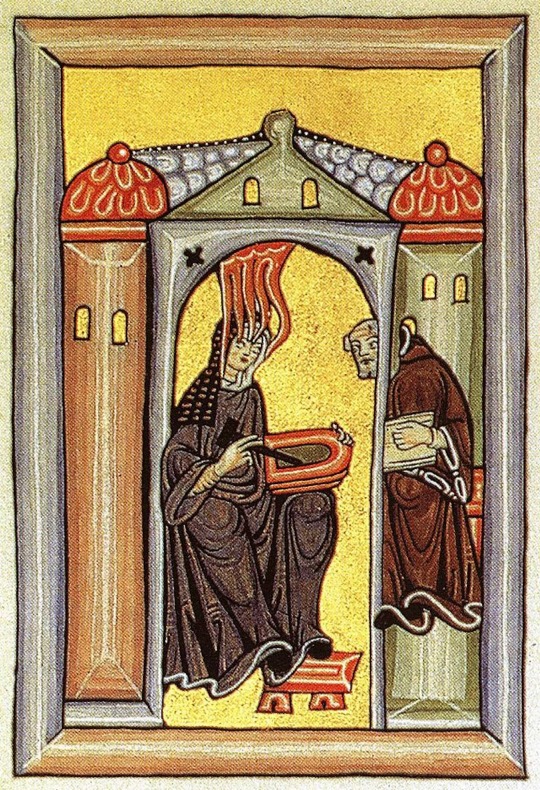
Two of the library’s most valuable possessions were manuscripts of Hildegard’s works. One was a beautifully illuminated copy of Scivias, a collection of 26 religious visions. The other manuscript, known as the Riesencodex, is the most complete compilation of her works, including the visionary writings, letters and the largest known collection of her music.
Why Struck chose to store the manuscripts in a bank vault in Dresden is still a mystery, but their journey there by train and streetcar mid-war is thoroughly documented.
The manuscripts sat in the bank vault for three years until the attack on Dresden.
After the war
Immediately after the war, the Americans sacked Struck in their denazification efforts. Librarian Franz Götting took over his job.
Götting inquired about the manuscripts as soon as mail service to Dresden resumed, and learned that the Scivias manuscript was missing, either seized or plundered, but that the bank still had the Riesencodex.
Götting asked repeatedly for the Riesencodex to be returned from Dresden to Wiesbaden. The difficulty was that Dresden was in the newly formed Soviet zone, while Wiesbaden was in the American zone. (The Allies had divided Germany into four occupation zones, and similarly divided Germany’s capital city, Berlin, into four sectors.) The Soviets had issued a decree stating that all property found in German territory occupied by the Red Army now belonged to them.Hildegard’s composition ‘O Most Noble Greenness.’
The plan
A scholar and medievalist in Berlin, however, came up with a scheme to retrieve the manuscript. Margarethe Kühn, a devout Catholic who expressed a great love for Hildegard, held a position as a researcher and editor with the Monumenta Germaniae Historica project. After the war she found herself living in the American sector of Berlin and working in the Soviet sector.Photograph of the 12th-century ‘Risencodex’ manuscript. (Wikimedia/Landesbibliothek Wiesbaden), CC BY
Kühn had stayed at the Hildegard Abbey for several days in March 1947 and had even explored joining the Abbey as a nun herself. She must have heard while she was there that the Riesencodex was being held in Dresden without any promise of return. She devised a plan to help.
Kühn asked Götting for permission to borrow the manuscript for study purposes. Götting asked the Soviet-run Ministry for Education, University and Science in Dresden on Kühn’s behalf. Much to the librarian’s surprise, ministry officials agreed to send the manuscript for Kühn to examine at the German Academy, a national research institute established in 1946 in Berlin by the Soviet administration.
Kühn was convinced that the bureaucrats in Dresden would not recognize the Riesencodex. She decided that when returning the manuscript, with help from the Wiesbaden librarian, Götting, she would send a substitute manuscript to Dresden, and the original to Wiesbaden.
The crossing
Kühn enacted the plan with the help of an American woman, Caroline Walsh.
How exactly Kühn and Walsh met is not known, but Caroline’s husband Robert Walsh was in the American air force and was stationed in Berlin as the director of intelligence for the European command from 1947-48.
In an interview in 1984, Robert explained that when he and Caroline were in Berlin she had “worked a great deal with the Germans and with the religious outfits over there, too.” Since the Walshes were also Catholic, it is likely that they and Kühn met through Catholic circles in the city.
Caroline’s position as the wife of a high-ranking military officer may have made it easier for her to travel across military occupation zones and sectors.
In any case, we know that Caroline travelled by train and car and delivered the manuscript in person to the Hildegard Abbey in Eibingen on March 11, 1948. The nuns notified Götting at the Wiesbaden library and returned the manuscript.
The swap
A Scivias illumination on an edition of Hildegard’s medical works. Beuroner Kunstverlag
Götting, meanwhile, had not found a suitably sized manuscript to stand in for the large Riesencodex to trick the Soviets. He instead selected a 15th-century printed book of a similar size and had sent this to Kühn in Berlin.
It took some time for Kühn to deliver it to the Ministry for Education, University and Science in Dresden, and two further months before anyone there opened the package in January 1950. By that time, Hildegard’s manuscript was safely in Wiesbaden. But officials spotted the deception and Kühn was in trouble.
An official in Dresden wrote to the German Academy in Berlin demanding to know why they had been sent a printed book rather than the Riesencodex manuscript.
Kühn’s boss, Fritz Rörig, who received the letter was furious with her. Rörig and Götting smoothed things over with Dresden by offering another manuscript in exchange. But Rörig told Kühn that the East German police were inquiring about her, the implication being that he had reported her.
One still missing
Although she remained deeply worried for some time afterwards, Kühn never lost her job at the Monumenta nor was she arrested, despite Rörig’s threats. For the rest of her life she maintained a rare cross-border existence, living on Soviet wages in the American sector while continuing at the same job until her death in 1986, at the age of 92.
As one of many scholars who regularly consults the Riesencodex, now available online, I am enormously grateful to Caroline Walsh, and particularly to Kühn who risked her livelihood for the sake of a book.
I am not alone, however, in hoping that during my lifetime someone, somewhere will find the pilfered Scivias manuscript and return it as well.
4 notes
·
View notes
Link
But saving Bolívar’s life multiple times wasn’t the only thing that made Manuela Sáenz extraordinary. Sáenz defied societal convention. She was a spy. She protested for women’s rights. She wore a custom-made Colombian colonel’s uniform. She threw fantastic parties, loved dogs, and maybe even had a pet bear. In a letter, Bolívar referred to his favorite mistress as “that gentle, crazy woman” and eventually gave her an official government position as his archivist.
19 notes
·
View notes
Text
Julian of Norwich wrote the first work in the English language which we can be sure was authored by a woman. For this fact alone she is remarkable, but she was also one of the most sophisticated and unusual theologians of her era.
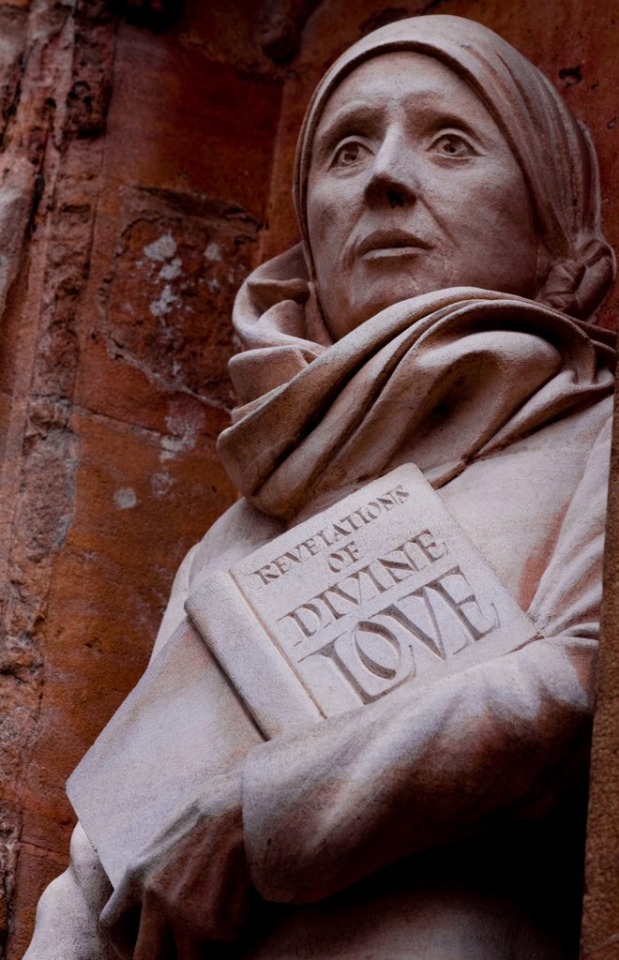
#julian of norwich#revelations of divine love#women in history#herstory#religious women#theology#female writers#women authors#history
1 note
·
View note
Text
Rachel Carson
An American conservationist, Rachel Carson (1907-1964) was one of the most important names in 20th-century environmentalism.
Carson was born on a family farm in Pennsylvania and grew up exploring the nature around her and reading and writing stories. She attended the Pennsylvania College for Women (now Chatham University), studying biology and graduating magna cum laude despite significant financial difficulties. She then attended graduate school at Johns Hopkins, studying zoology. Carson then intended to go on to a PhD, but was forced to find full-time work to support her family during the Great Depression. She began working as a junior aquatic biologist at the U.S. Bureau of Fisheries.
A lifelong writer, Carson often combined her love of the ocean and her love of literature. She began writing full-length books about marine biology, receiving rave reviews but sometimes poor sales.
She continued working with the U.S. Bureau of Fisheries as it turned into the Fish and Wildlife Service, and in 1949 became the chief editor of publications. It was Carson's 1962 book Silent Spring that gave her lasting fame and influence. Wildly credited for being essential in launching the environmental movement, especially about the harmful effects of DDT.
Carson had a close friendship, and possibly a romantic one, with Dorothy Freeman. Many of the letters appear deeply romantic in tone, and hundreds of their letters were destroyed by Carson before she died. After her death, Carson willed her ashes to Freeman in Maine.
11 notes
·
View notes
Photo
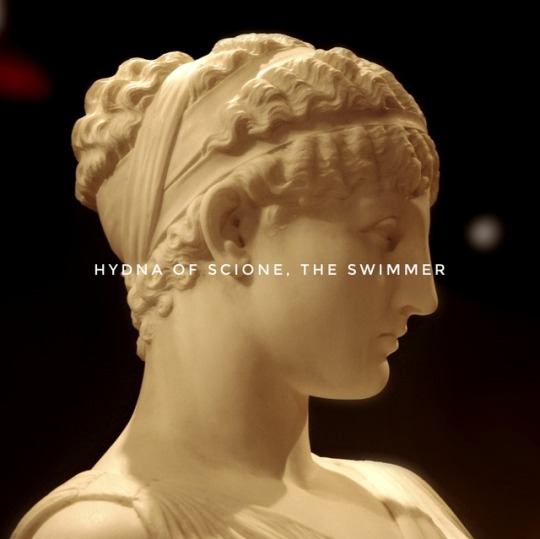
Hydna of Scione was instrumental in securing the Greek victory against the Persians. How? She destroyed their armada.
BASIC BIO: (exact dates unknown, but sometime around 480 BC) Hydna of Scione had been trained to swim long distances by her father since childhood. When the Greeks and Persians were at war (think 300), a naval battle had the potential to destroy the former completely. Hydna and her father swam 10 miles, if the accounts are to be believed, and cut the ships from their moorings. Without the weight of their anchors, the Persian ships smashed together in the choppy waters. The dreaded battle at sea was over before it had even began.
WANT MORE? OF COURSE YOU DO: Hydna’s story seems to begin and end in this one incident, and there isn’t much outside reading beyond other articles online. It seems statues of her were erected in the wake of her triumphant swim, but these have been lost to time.
50 notes
·
View notes
Photo
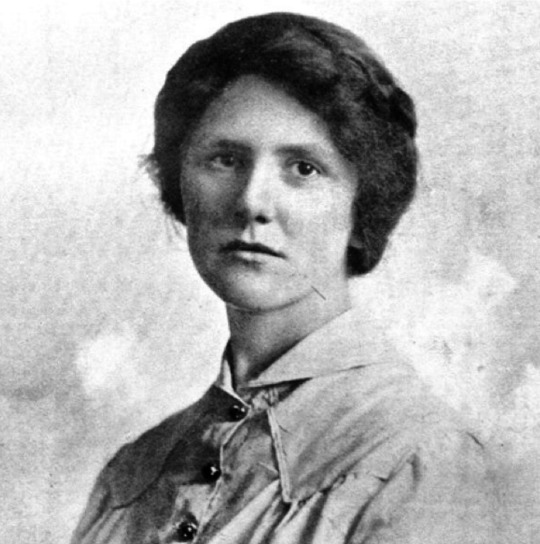
It is when the body is keyed to its highest potential and controlled to a profound harmony deepening into something that resembles a trance, that I discover most nearly what it is to be. I have walked out of the body and into the mountain.
- Nan Shepherd, The Living Mountain: A Celebration of the Cairngorm Mountains of Scotland
43 notes
·
View notes
Photo

Alaa Salah becomes a symbol of a new Sudan, 2019. (Photograph: Lana H Haroun)
“We were seeking freedom, and we were seeking our dreams, and we were seeking a new Sudan,” recalls artist and musician Lana H Haroun of the 2019 revolution. Initially, forces loyal to president Omar al-Bashir had cracked down violently on protesters. But then some members of the army began to defend them, creating a safe space outside the presidential palace. People travelled from all over Sudan to be there.
“Every day I was there, capturing photos,” Haroun recalls. “It felt like history itself.” One day, she noticed people rushing towards a figure addressing the crowd, a 22-year-old called Alaa Salah. Haroun took four photos, and shared the best one online. It went viral, first on social media, then in newspapers around the world. “A lot of things happened after that.” Previously it had felt as if there was very little global coverage of what was going on in Sudan, but after Haroun’s picture it suddenly felt as if “everybody in the world was focusing on what is going on in Sudan”.
Women played a powerful and visible role in the protests; for Haroun, the picture was a strong message that women can lead. Salah went on to speak at the UN and was a Nobel peace prize contender. FB
48 notes
·
View notes
Text
The article of law whereby a rapist could extinguish his crime by marrying his victim was not abolished until 1981.
31 notes
·
View notes